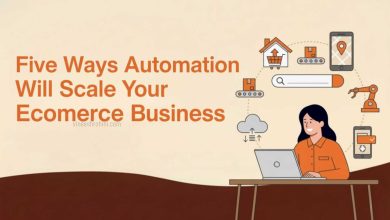How to Do Market Research for Online Business : Comprehensive Guide 2025
Market Research for Online Business : In the rapidly evolving digital ecosystem, starting an online business in 2025 requires more than just a great idea—it demands thorough market research. Whether you’re launching an e-commerce store, a service-based website, or a digital product, understanding your target market, competitors, customer behavior, and industry trends is essential for success. Market research enables you to reduce risks, identify profitable niches, develop compelling offerings, and craft strategies that convert.
Table of Contents
This comprehensive guide explores how to do market research for online business in 2025 using modern tools, techniques, and data-driven insights.
What is Market Research in Online Business?

Market research is the process of gathering, analyzing, and interpreting data about a specific market, including information about potential customers, competitors, demand trends, pricing strategies, and marketing channels. For online businesses, market research goes beyond offline practices and leverages the power of digital analytics, social listening, AI-driven tools, and real-time consumer data.
In 2025, successful entrepreneurs use market research to:
- Validate business ideas and identify profitable niches
- Understand customer needs and buying behavior
- Analyze competitors and spot gaps in the market
- Tailor marketing campaigns for better engagement
- Create data-driven products or services
- Stay ahead of emerging trends and technologies
Types of Market Research for Online Businesses
Understanding the two primary types of market research is essential for a complete strategy:
1. Primary Research
This involves collecting original data directly from sources, such as:
- Online surveys and polls
- Interviews and focus groups via Zoom or Google Meet
- Feedback forms and reviews
- Social media polls (Instagram Stories, YT Community, etc.)
Primary research helps you get firsthand insight into customer pain points, preferences, and willingness to pay.
2. Secondary Research
Secondary research uses existing data from trusted sources like:
- Government reports (Statista, RBI, etc.)
- Industry publications and market reports
- Competitor websites and blogs
- Google Trends and keyword tools
- Research papers and whitepapers
Also Read : Start a Fashion Store Online
It offers macro-level understanding of market size, trends, and competition.
Why Market Research is Crucial for Online Business in 2025
In the crowded and competitive digital marketplace of 2025, guessing is a risk you can’t afford. Here’s why conducting market research is a non-negotiable step:
- Identifies Gaps: Helps you uncover untapped niches or underserved segments
- Improves Product Fit: Refines your offerings to match consumer expectations
- Informs Marketing: Enables precise targeting and ad personalization
- Enhances Customer Experience: Delivers services/products that solve real problems
- Boosts ROI: Reduces spending on ineffective strategies or platforms
- Keeps You Competitive: Reveals what competitors are doing and how you can differentiate
How to Do Market Research for Online Business – Step-by-Step Process
Let’s break down the process of conducting effective market research for your online business in 2025.
Step 1: Define Your Business Goals and Objectives
Before diving into data, clearly outline your goals:
- What are you selling—product, service, or digital content?
- Who is your target audience?
- Are you entering a new niche or improving an existing offering?
- Are you targeting a local market or a global one?
Your market research should align with specific goals like product launch, audience segmentation, or content strategy development.
Step 2: Identify Your Target Audience
Your business can’t serve everyone. Identifying your ideal customer profile (ICP) is vital.
Create Buyer Personas:
Include data like:
- Age, gender, location, and occupation
- Interests, hobbies, and income level
- Online behavior (platforms they use, content they consume)
- Pain points and aspirations
- Purchasing behavior and decision-making process
Tools to use in 2025:
- Make My Persona by HubSpot
- Semrush One2Target
- Google Analytics 4
- Meta Audience Insights
Understanding your audience ensures that your offerings and messaging hit the mark.
Step 3: Conduct Competitor Analysis
Analyze your competitors to discover what works, what doesn’t, and where the gaps are.
Key Questions to Ask:
- Who are your direct and indirect competitors?
- What products or services do they offer?
- How do they price their offerings?
- What platforms are they using (Amazon, Shopify, YouTube, Instagram)?
- What are customers saying in reviews and comments?
- What kind of content do they create and promote?
Tools to Analyze Competitors:
- SimilarWeb: Website traffic and marketing channels
- Ahrefs / SEMrush: Keyword strategies, backlinks, content gaps
- SpyFu: PPC campaigns and SEO strategies
- Facebook Ads Library: Ad copies and creatives
- G2 / Capterra: Product reviews and user feedback
Competitor research helps you carve a unique value proposition (UVP).
Step 4: Analyze Market Demand and Trends

Understand if there’s enough demand in your niche and whether it’s growing, stable, or declining.
Use These Tools:
- Google Trends: Visualize search interest over time
- Ubersuggest / AnswerThePublic: Content and keyword demand
- Amazon Bestsellers: What products are trending?
- Trend Hunter / Exploding Topics: Emerging trends in your industry
- Statista: Data on industry size, growth, and forecast
Validate your idea using demand-based metrics. Launching a product with zero demand leads to failure even if it’s innovative.
Step 5: Perform Keyword Research
Keyword research isn’t just for SEO; it reveals what people want.
Steps:
- Find relevant keywords for your niche
- Analyze keyword volume and competition
- Identify long-tail keywords (easier to rank and high intent)
- Categorize keywords by buying intent (informational, navigational, transactional)
Top Tools:
- Google Keyword Planner
- Ahrefs / SEMrush
- Moz Keyword Explorer
- Surfer SEO (for content planning)
Example: Instead of “fitness app”, target “best fitness app for beginners 2025”.
Step 6: Use Online Communities and Forums
Reddit, Quora, Facebook Groups, and niche forums are goldmines of unfiltered consumer feedback.
What to look for:
- Frequently asked questions
- Product or service complaints
- Recommendations and comparisons
- Buying motivations and emotional triggers
Pro Tip:
Use the site:reddit.com or site:quora.com Google operator to find niche-specific discussions easily.
Step 7: Use Surveys and Polls for Validation
Direct feedback is still one of the most powerful forms of research.
How to do it:
- Create short, actionable surveys using Google Forms, Typeform, or SurveyMonkey
- Distribute via email lists, WhatsApp groups, social media, or paid ads
- Offer a freebie or discount as an incentive
Ask questions like:
- What is your biggest challenge with [problem]?
- What solution are you currently using?
- How much are you willing to pay for [solution]?
- Where do you usually shop for [product/service]?
Step 8: Monitor Social Media Trends
Social media offers real-time market sentiment and consumer behavior.
Track:
- Trending hashtags related to your niche
- Influencer campaigns and audience engagement
- Viral products or services in your category
- Comments and reviews on competitors’ pages
Tools:
- Brand24 / Sprout Social for social listening
- BuzzSumo for viral content insights
- Instagram Insights / YouTube Analytics for your content performance
This helps you tap into consumer psychology and content ideas.
Step 9: Evaluate Pricing and Packaging Strategies
Research what price points customers expect and what features or bonuses influence their buying decisions.
Research Tactics:
- Analyze pricing models of competitors (subscription, one-time, freemium, etc.)
- Monitor customer sentiment on pricing through reviews and forums
- A/B test pricing on landing pages or ad sets
- Check perceived value vs actual features
Pro Tip:
Use Value-Based Pricing: Set prices based on what your customers perceive your product’s value to be—not just your costs.
Step 10: Organize and Interpret the Data
Now that you’ve collected a lot of data, analyze it thoroughly.
Tools to Visualize and Interpret:
- Google Sheets / Excel: To segment and analyze data
- Notion / Trello: To manage research workflows
- Canva: To create research reports and infographics
- Power BI / Tableau: For deeper data visualization
Look for patterns, correlations, and actionable insights that can inform your product design, pricing, marketing, and customer experience.
Bonus: Use AI Tools for Market Research in 2025
Leverage AI-powered tools to save time and improve accuracy.
- ChatGPT: To brainstorm questions, interpret feedback, and summarize data
- SparkToro: To understand what your audience reads, listens to, and follows
- Copy.ai / Jasper: To analyze tone of voice and test brand messaging
- Hotjar: For user behavior analysis on landing pages
- Surfer SEO + AI Writers: For keyword-informed content creation
AI is not a replacement for research—but a powerful assistant.
Market Research for Online Business – Conclusion

Market research for online business in 2025 is no longer optional—it’s the bedrock of success in a hyper-competitive digital age. From understanding your audience to spying on competitors and tracking trends, every insight gathered fuels better decisions and drives profitability. Thanks to modern tools, AI platforms, and real-time data access, entrepreneurs can research markets faster and more efficiently than ever before. Whether you’re launching a new online store, validating a SaaS product, or creating content for a digital audience, proper research minimizes risk, enhances strategy, and maximizes your growth potential.
Buy Now : Ecommerce Website
Action Step: Use this guide as your blueprint, set clear goals, pick your tools, collect your data, and turn insights into action. A well-researched business is a profitable business in 2025.
Disclaimer : This guide is for informational purposes only. Business decisions should always be made based on your specific situation, industry standards, and legal requirements.



